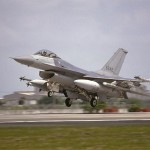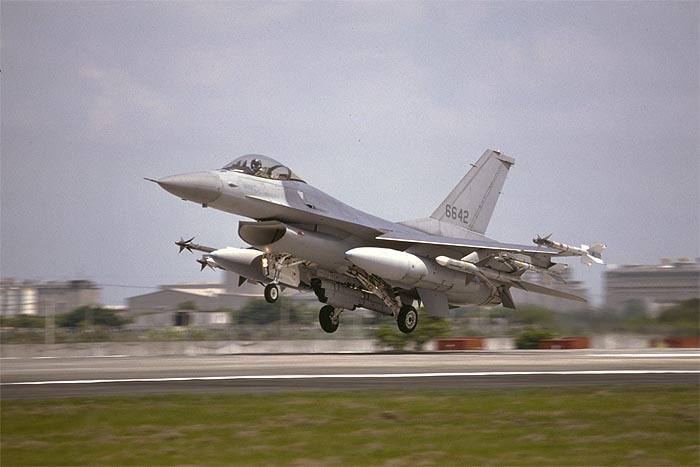
Media reports appearing in the Chinese-language editions of the China Times and Liberty Times claiming that Taiwan has agreed to reduce the number of F-16C/D fighters it is requesting from the United States are now being refuted by the Taiwanese Ministry of National defense.
Both news outlets quoted an unnamed “authoritative military source” as being the primary source behind their reports published on 13 August. According to the unnamed source, Taiwan’s Deputy Minister of National Defense, Andrew Yang, and the Deputy Secretary-General of Taiwan’s National Security Council, Lu Hsiao-jung, proposed that Taipei would be willing to reduce its request for F-16C/D aircraft from an initial 66 to a single squadron of 24 during joint talks with representatives of the United States.
The US-Taiwan discussions are an annual meeting, commonly known as the “Monterey Talks,” designed to facilitate a bilateral defense dialog between the two allies that also includes negotiations regarding arm’s sales.
The Ministry of Defense was quick to refute the claims carried in the two publications. Shortly after the Ministry of Defense dismissed the media reports, the National Security Council added its own statement also denying the reports in saying that procurement decisions fell to the Air Force and the Ministry of Defense. During a press conference, Major General David Lo, speaking on behalf of the Ministry of Defense, called the media reports false, and stated that no such proposal was ever submitted by Taipei’s representatives during the talks. The Air Force also stated that the media reports were without merit.
Despite Taiwan’s repeated requests for new F-16C/D fighters, the United States has denied the requests. Many defense analysts speculate that the US refusal to sell Taiwan new aircraft is an attempt to avoid an unsavory dispute with China.
In September, the US and Taipei agreed to an offer valued at $5.2 billion that would upgrade Taiwan’s existing fleet of 146 F-16A/B Block 20 Fighting Falcons with work to begin in 2016 and delivery of the first upgraded aircraft scheduled for 2021.
On 13 July, Taiwan signed a Letter of Offer and Acceptance (LOA) to begin the first installment of the upgrade project. This initial LOA is valued at $3.7 billion. Current projections are to have 24 F-16A/Bs pulled from active service at a time to undergo upgrade work until necessary work is completed on the entire fleet.
It may simply be coincidental that the number of 24 aircraft is what defense experts say is the absolute minimum needed to cover anticipated fighter shortages resulting from upgrade work and the scheduled retirement of older aircraft. Some media reports have announced that Taipei will retire as many as 56 Mirage 2000 and 45 worn out F-5 fighters in the near future. Should these aircraft be retired as claimed, Taiwan’s air fleet would be reduced to 146 F-16A/Bs and 126 F-CK-1 Indigenous Defense Fighters (IDF) with the F-CK-1s currently undergoing upgrade work.
China’s military expansion and modernization program, coupled with Beijing’s increasingly bold moves in the South China Sea, have been a worrisome concern for Taiwan. Taipei’s concerns have risen significantly in recent months as China has adopted a more aggressive posture in laying claim to territories in the South and West China Sea areas. Fear of Chinese aggression is a consideration that invariably colors Taiwan’s policy-making process and is a concern that is usually uppermost in the minds of the Taiwanese citizenry.

















